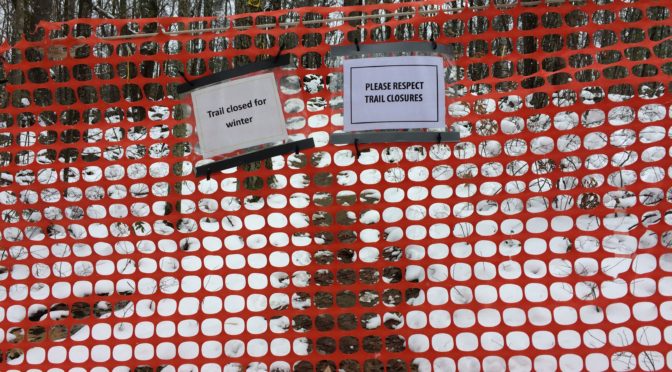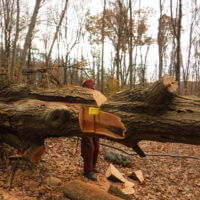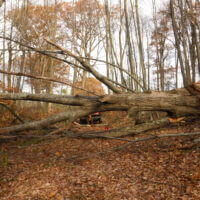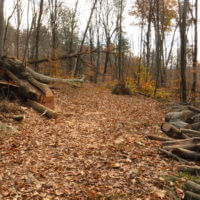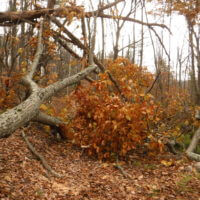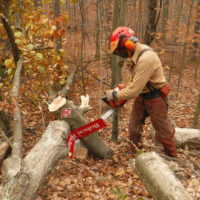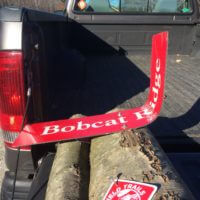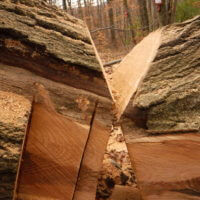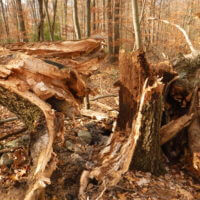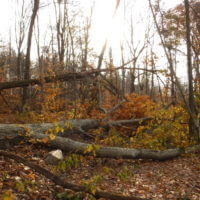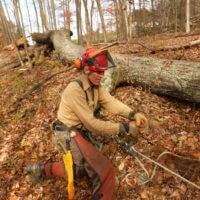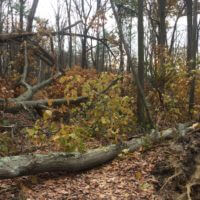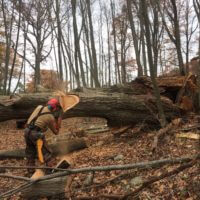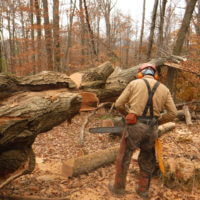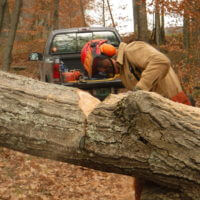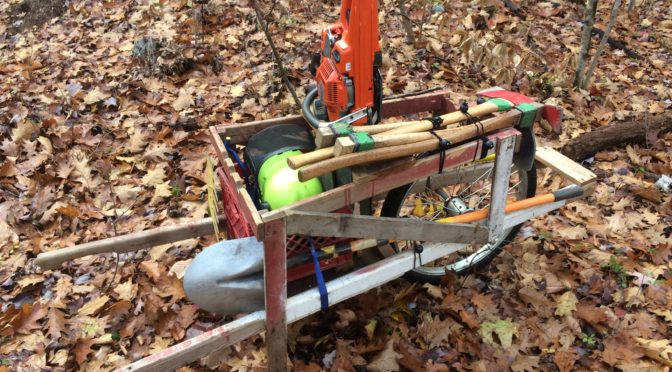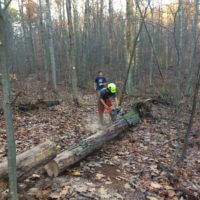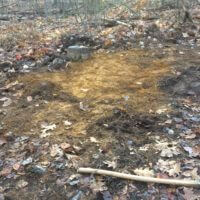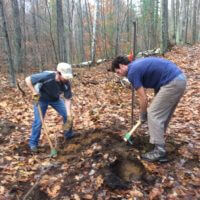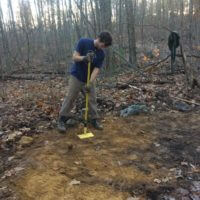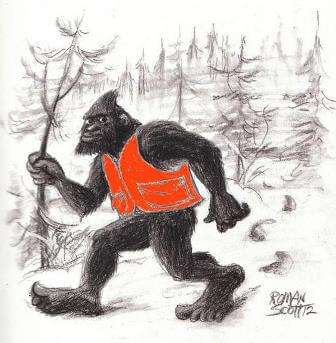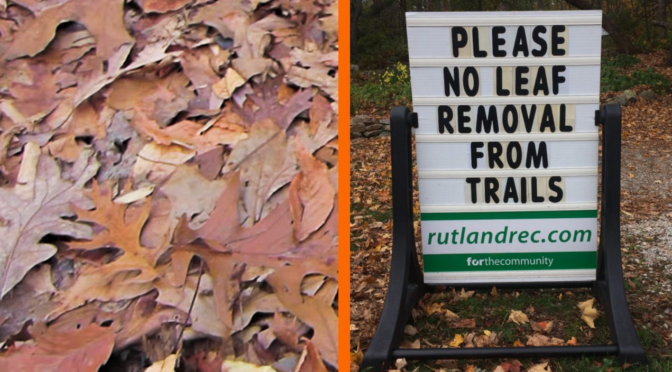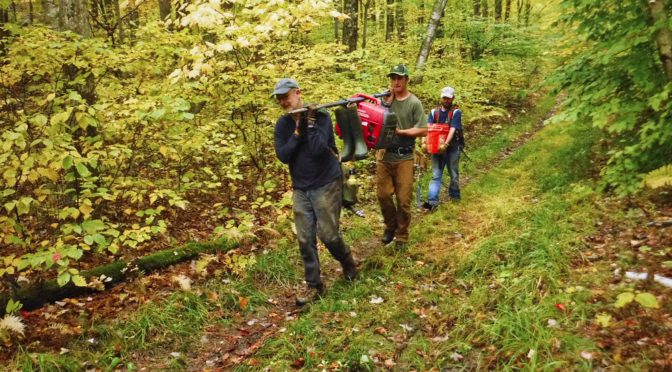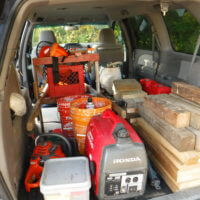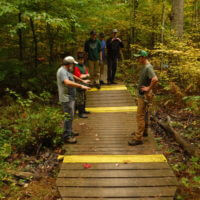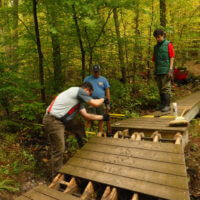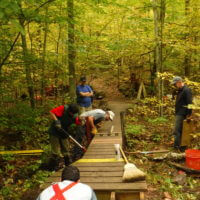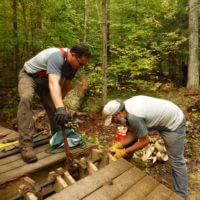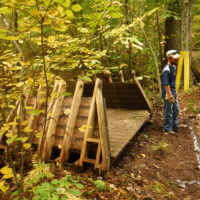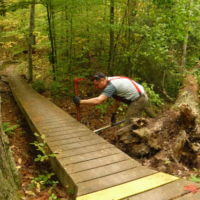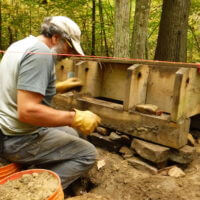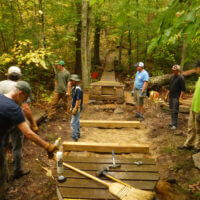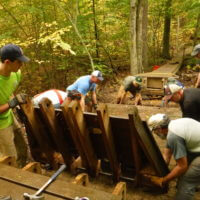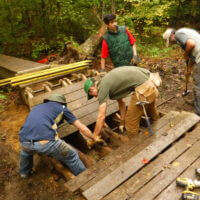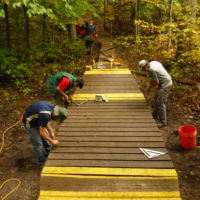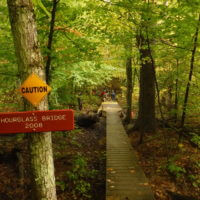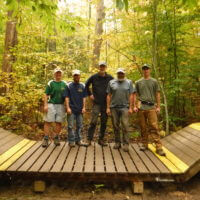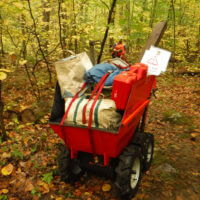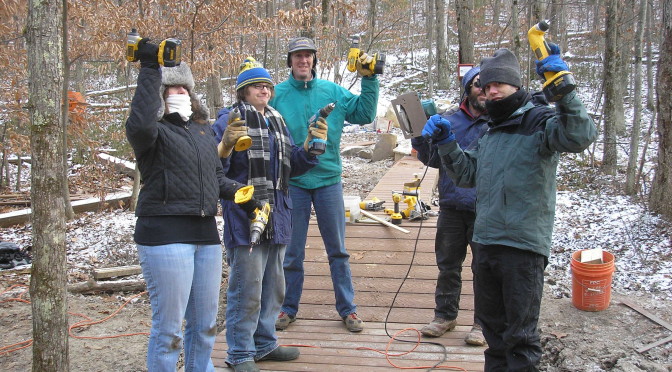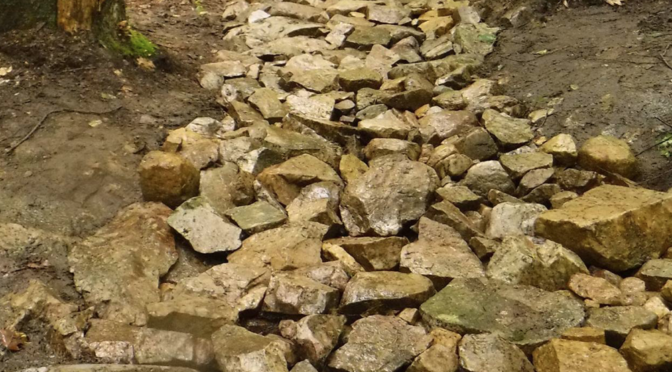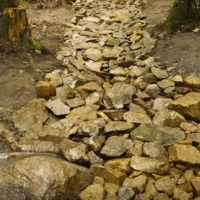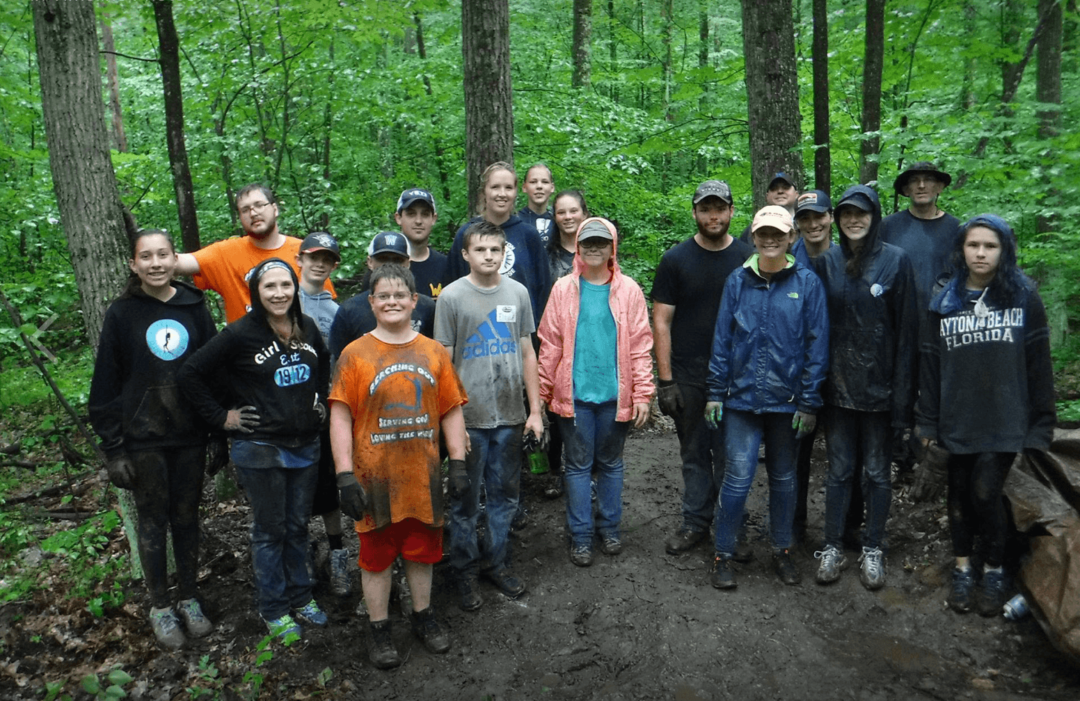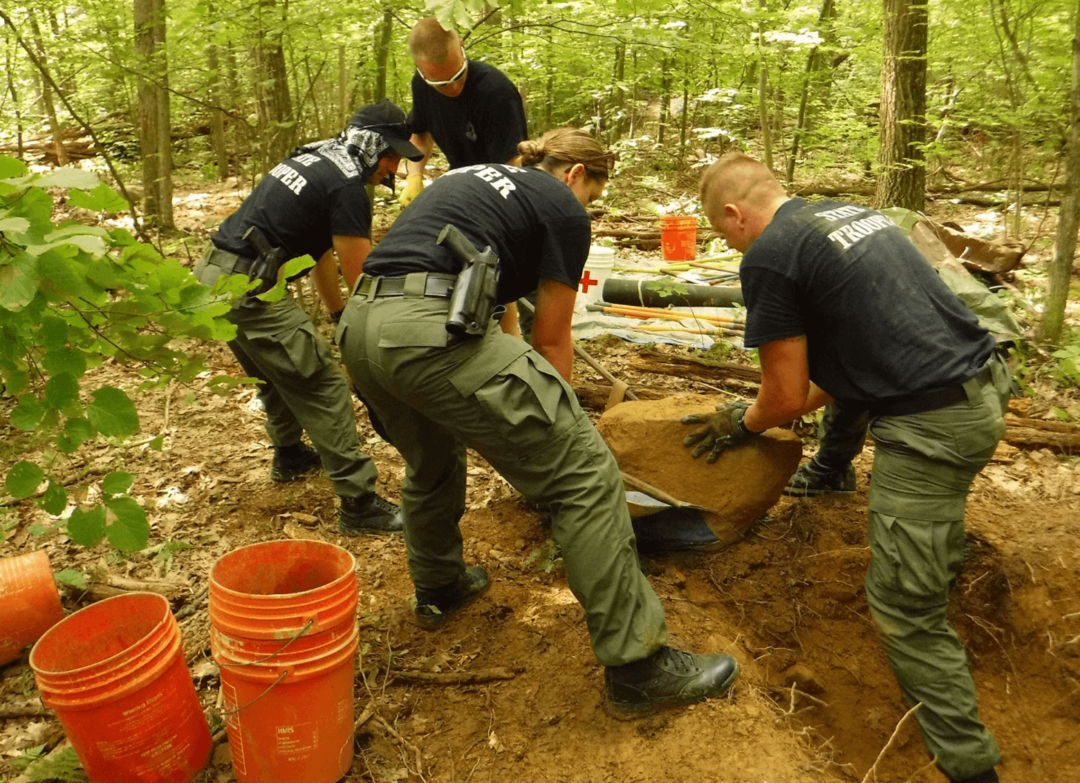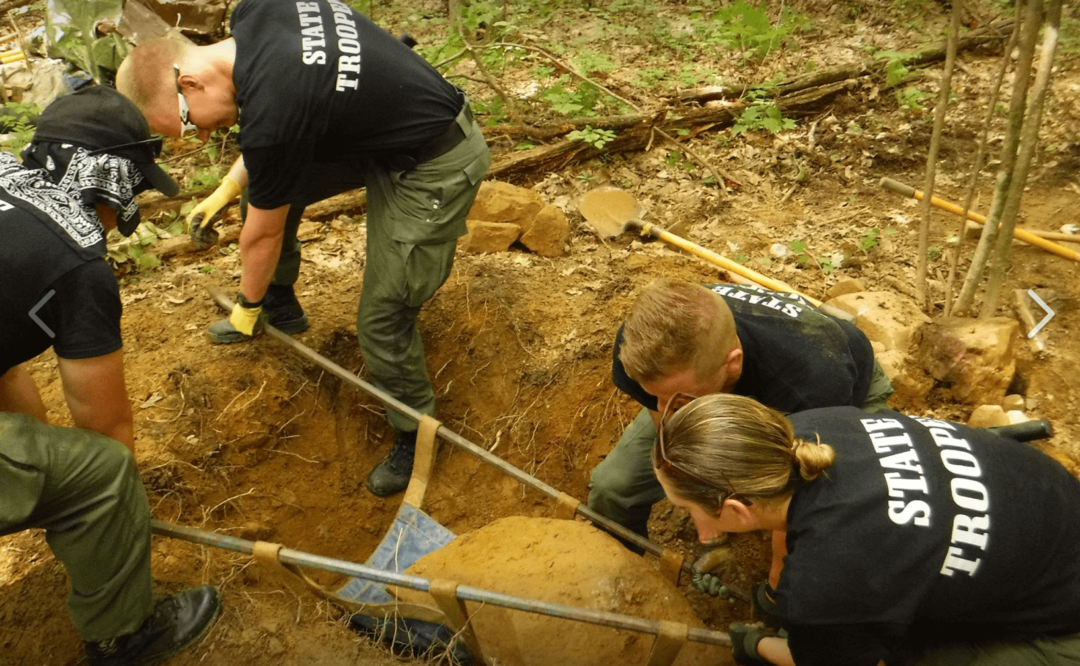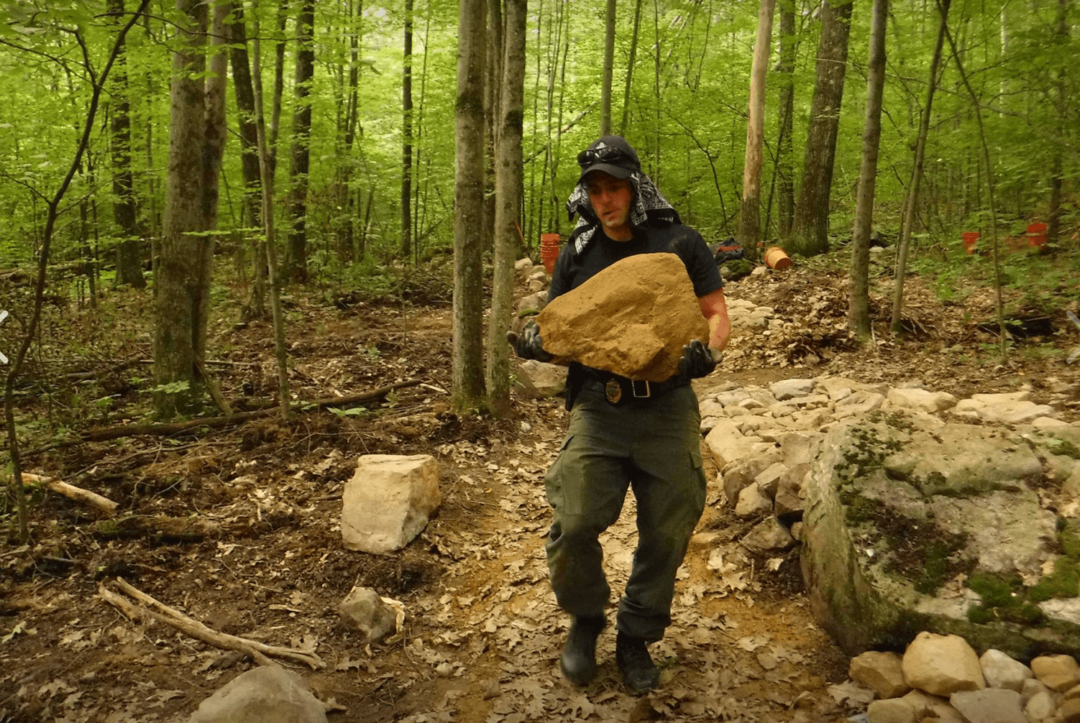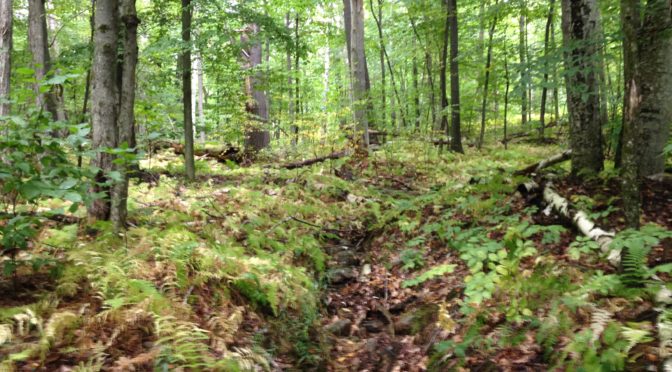We hope you enjoy Tom Estill’s summer report!
Wild Times at Pine Hill Park
Summer 2017 Summary
During the third week of June, measurements of the heights of all 47 American chestnut trees were made. Some of the trees are now more than three feet high, after growing for a little more than two years, and starting as seedlings about ten inches tall. A hermit thrush nest I had been keeping a close eye on for about a month was found to be abandoned. I could only hope that the four chicks had successfully fledged. The nest was located at the base of one of the American chestnut trees. For the third year in a row now, yellow-bellied sapsuckers have been found nesting in a beech tree on the upper Giorgetti trail. They use the same tree, but not the same nests as in previous years, choosing instead to drill a new hole in the tree.
The last week of June you could find a variety of butterflies throughout the park including the painted lady, red admiral, white admiral, and tiger swallowtail. On any day this time of year, you were likely to see or hear a robin, veery, ovenbird, hermit thrush, American redstart, tufted titmouse, yellow-bellied sapsucker, broad-winged hawk, black-capped chickadee, Eastern peewee, redeyed vireo, yellow-throated vireo, empidomax flycatcher, scarlet tanager, yellowthroat, mourning dove, catbird, hairy and pileated woodpeckers, white-breasted nuthatch, and up at Rocky and Muddy ponds, osprey, belted kingfisher, great blue heron, and cedar waxwing. Garter snakes were a common sight along the trails, and northern water snakes were a common sight along the shores of Rocky Pond. Schools of young brown bullhead fish could also be seen in the shallow waters of Rocky Pond.
July
The first week of July found the osprey sitting on their Muddy Pond nest, just as they had been seen doing since May. It appeared that they were incubating eggs, which, of course, was very exciting news. Most of the time, the female could be found sitting on the nest, while the male was either perched nearby or off hunting then bringing back food to the female. Common flowers this time of year included, pointed-leaved tick trefoil, ox-eye daisy, thimbleweed, shinleaf, forget-me-not, hop clover, red clover, and yarrow. Gray squirrels and Eastern chipmunks were seen on every outing. Peepers could no longer be heard, but green frogs and bullfrogs were croaking. Song sparrows were beginning to sing at Rocky Pond.
July 11th was one of those wonderful “enchanted evenings”. Started my walk listening to a scarlet tanager sing near the boardwalk, followed by a variety of singing songbirds, including some recent arrivals such as the Eastern towhee, black-throated green warbler, American goldfinch, and great crested flycatcher. Osprey were seen at their nest, beavers were seen at both ponds, three barred owls were “hooting” in the area between the two ponds, and bullfrogs and green frogs were calling.
Mid-July found the forest filled with the same songbirds, osprey still sitting on the nest, inch long baby painted turtles on the shore of Rocky Pond, and tiny wood froglets hopping around the forest near Rocky Pond. Rocky Pond surface water temp. was 86F. Analysis of a Rocky Pond plankton sample showed the presence of Peridinium dinoflagellates, water fleas, vorticella, rotifers, small nematodes, diatoms, various ciliates, and bladderwort.
The middle-third week of July was a time of frequent rains, followed a few days later by bothersome swarms of mosquitoes. In the 5 years I’ve been hiking Pine Hill Park, this period of time was the worst for mosquitoes I had ever experienced. By the last week of July, the forest had become noticeably quieter than in previous weeks. A mother cedar waxwing was seen feeding her young in a nest located in a pitch pine tree at Rocky Pond, osprey were still sitting on their nest, and the forest floor was covered with mushroom due to the moist ground and recent warm temperatures. Birds commonly seen included Eastern peewee, black-capped chickadees, tufted titmouse, white-breasted nuthatch, gray catbird, hermit thrush, red-eyed vireo, yellow-throated vireo, song sparrow, cardinal, American goldfinch, American redstart, and black and white warbler.
August
The beginning of August found osprey still sitting on the nest, but occasionally, I would observe both adults away from the nest for a short period of time. I now suspected the osprey did not have a successful nesting season. For about 2 weeks, I had also observed a young American toak hiding under the overhang of a small rock, protecting itself from the sun. Why it stayed there for so long is a mystery to me. Spicebush swallowtail butterfly and spotted sandpiper both seen at Rocky Pond.
By the second week of August the forest had become very quiet, and temperatures were noticeably cooler. I did see a cottontail rabbit on Crusher Rd., a spotted young white-tailed deer near trail marker 16A, and a single Canada goose on Muddy pond. Lifted up a rock and was surprised to see a ringnecked snake, the first time I had seen such a snake at Pine Hill Park. They’re secretive snakes, and I have no doubt I would find many more if I took the time to life up more rocks and downed trees. Monarch butterflies were seen flying through the forest, and ants were beginning to swarm, always a sure sign of changing seasons. Tree leaves were beginning to lose their dark green color and take on a more shaded green color. Numerous young pickerel frogs could be found hopping around the area between the two ponds.
On a typical day towards the end of August you could find acorns and beech nuts starting to fall, the forest occupied by birds mostly found year around, but some migrants still present including red-eyed vireo, gray catbird, American redstart, house wren, and yellow-bellied sapsucker, osprey still sitting on the nest, and gray squirrels taking mouthfuls of leaves up to their temporary nests. Saw a massive snapping turtle at Muddy Pond on August 27th. Large numbers of migrating passerines were seen in the forest that same day.
September
The first week of September saw a few days of rain which moistened the park so much that red efts and young American toads were a common sight on the trails. Three adult ospreys were found at Muddy Pond. Two could be seen on or near the nest, and the third perched in the old abandoned great blue heron nest. I suspect the third osprey was just migrating through the area. By mid-Sept., some of the tree leaves were beginning to show their fall foliage colors and osprey were no longer seen at Muddy Pond. On September 9th, I took a late afternoon walk through the forest. It was very quiet. I saw a pileated woodpecker, heard a gray tree frog calling, saw a gray squirrel and Eastern chipmunk and two beavers at Rocky Pond, but that was all. That’s it for this seasonal summary. Please stay on the trails, and let’s hope that next year the Osprey may finally have a successful nesting season.
Link to Download Pine Hill park summer 2017 summary

